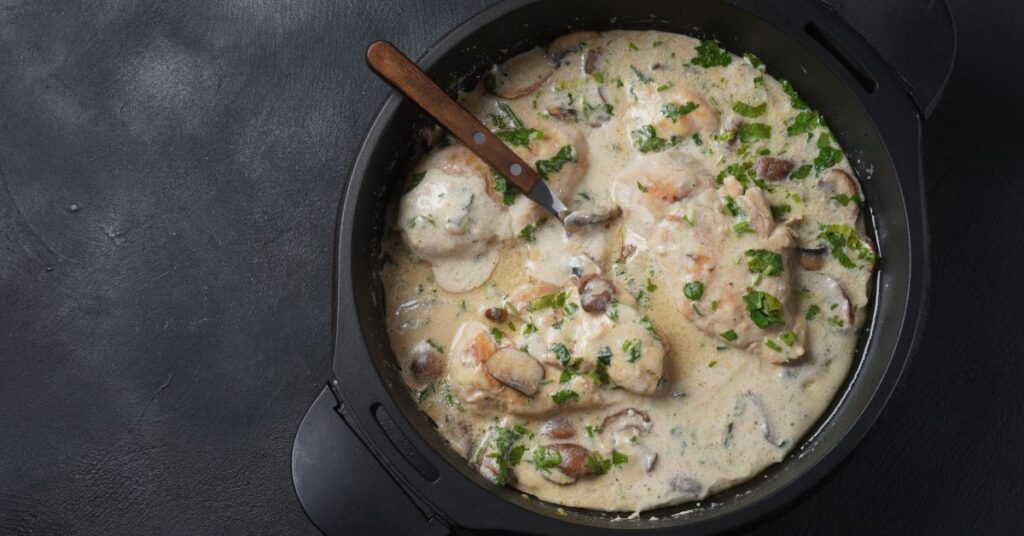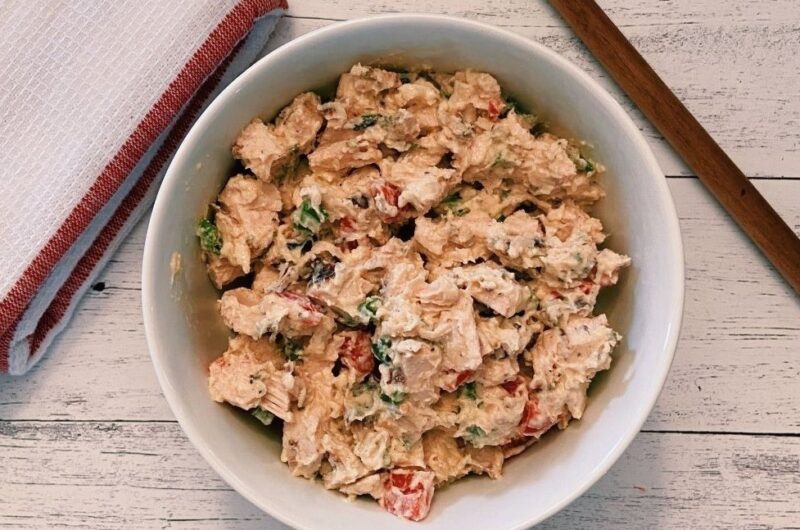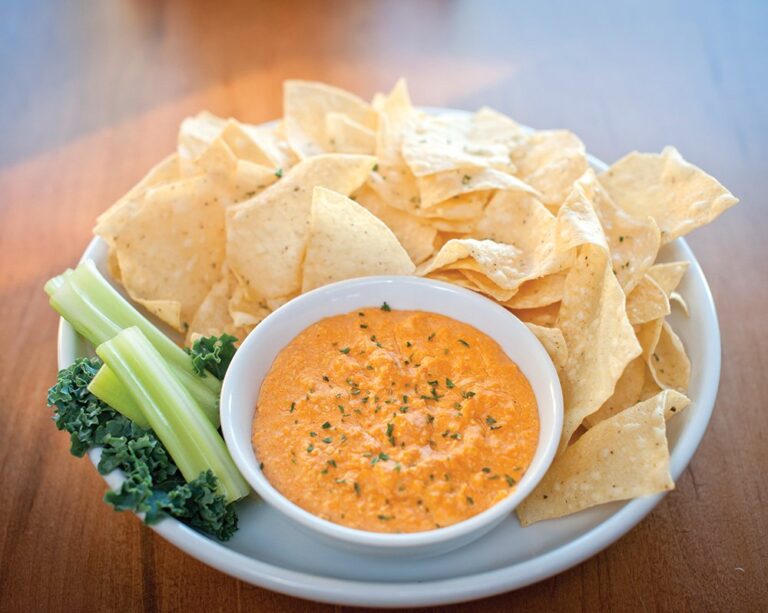Bariatric Chicken Recipes
Bariatric surgery has gained significant popularity as an effective solution for individuals struggling with obesity and related health issues. Following the surgery, patients must adopt a new dietary approach that ensures proper nutrition while promoting weight loss and overall well-being.
Chicken, being a lean source of protein, is often a staple in bariatric diets. In this article, we’ll delve into the world of bariatric chicken recipes, exploring their nutritional value, preparation tips, and commonly asked questions.
Contents
- 1 Nutritional Significance of Chicken in Bariatric Diets
- 2 Cooking Methods for Bariatric Chicken
- 3 Seasoning and Flavor Enhancement
- 4 Pairing Chicken with Nutrient-Rich Side Dishes
- 5 Bariatric Chicken Recipe
- 6 Nutritional Content
- 7 Frequently Asked Questions (FAQs)
- 8 Can the Slimming World Chicken Wrap Recipe be Modified for Bariatric Patients?
- 9 Conclusion
Nutritional Significance of Chicken in Bariatric Diets
After undergoing bariatric surgery, patients experience reduced stomach capacity, making it crucial to prioritize nutrient-dense foods. Chicken, particularly skinless chicken breast, is rich in protein, an essential macronutrient that aids in muscle maintenance and repair, supports immune function, and helps control appetite. Moreover, chicken is low in fat, making it an ideal choice for post-surgery weight loss efforts.
Cooking Methods for Bariatric Chicken
The preparation of chicken for bariatric patients requires attention to cooking methods that retain flavor, tenderness, and nutrition. Common cooking methods include baking, grilling, steaming, and poaching. These techniques help to minimize the need for added fats while ensuring the chicken remains moist and flavorful.
Seasoning and Flavor Enhancement
Bariatric patients should be mindful of sodium and sugar content in their meals. Utilizing herbs, spices, and citrus fruits can add vibrant flavor to chicken without relying on excessive salt or high-calorie sauces. Options like lemon zest, rosemary, thyme, and garlic can enhance the taste of bariatric chicken dishes.
Pairing Chicken with Nutrient-Rich Side Dishes
To create well-rounded bariatric meals, it’s essential to complement chicken with nutrient-rich sides. Non-starchy vegetables like broccoli, cauliflower, and leafy greens offer fiber, vitamins, and minerals, aiding in digestion and overall health. Incorporating whole grains like quinoa or brown rice can provide sustained energy and fiber, promoting satiety.
Bariatric Chicken Recipe
2
15
minutes35
300
kcalIngredients
2 boneless, skinless chicken breasts
1 tablespoon olive oil
1 teaspoon garlic powder
1 teaspoon paprika
1/2 teaspoon dried thyme
Salt and pepper to taste
1 lemon (zest and juice)
1 cup low-sodium chicken broth
Chopped fresh parsley (for garnish)
Directions
- Start by prepping your ingredients. Zest the lemon and set aside the zest. Juice the lemon and set the juice aside. Measure out the olive oil, garlic powder, paprika, dried thyme, salt, and pepper.
- Place the chicken breasts on a clean cutting board. Drizzle olive oil over both sides of the chicken breasts, then sprinkle with garlic powder, paprika, dried thyme, salt, and pepper. Make sure the seasoning is evenly distributed on both sides.
- Heat a non-stick skillet over medium-high heat. Once the skillet is hot, add the seasoned chicken breasts. Cook for about 5-6 minutes on each side, or until the chicken is cooked through and no longer pink in the center. Cooking time may vary depending on the thickness of the chicken breasts.
- Once the chicken is cooked, remove it from the skillet and set it aside on a plate. In the same skillet, pour in the chicken broth and lemon juice. Use a spatula to gently scrape up any browned bits from the bottom of the skillet. Let the mixture simmer for a few minutes to allow the flavors to meld.
- Place the cooked chicken breasts on serving plates. Pour the lemon and broth mixture over the chicken. Sprinkle the lemon zest on top for an extra burst of flavor.
- Finish by garnishing the dish with chopped fresh parsley. The vibrant green color adds a pop of freshness to the dish. Serve the Bariatric Chicken with a side of steamed vegetables, cauliflower rice, or a simple salad for a well-rounded meal
Nutritional Content
- Calories: Around 250-300 kcal (calories)
- Protein: Around 25-30 grams
- Carbohydrates: Around 5-7 grams
- Dietary Fiber: Around 1-2 grams
- Sugar: Around 1-2 grams
- Fat: Around 15-20 grams
- Saturated Fat: Around 3-5 grams
- Cholesterol: Around 70-80 mg
- Sodium: Around 300-400 mg
Frequently Asked Questions (FAQs)
1. Can I eat chicken right after bariatric surgery?
It’s important to follow your surgeon’s recommendations regarding your diet progression after surgery. Typically, you’ll start with clear liquids and gradually advance to soft foods like chicken. Consult your medical team for personalized guidance.
2. How can I ensure my chicken remains tender and moist during cooking?
Using cooking methods like baking or poaching and marinating the chicken beforehand can help retain its moisture and tenderness. Avoid overcooking, as it can lead to dryness.
3. Can I use store-bought marinades for my bariatric chicken?
While store-bought marinades can be convenient, they often contain added sugars and sodium. Consider making your own marinades using herbs, spices, and vinegar to control the ingredients and nutritional content.
4. Is it okay to consume chicken skin after bariatric surgery?
Chicken skin is high in fat and can be tough to digest. It’s advisable to remove the skin before cooking to reduce fat intake and minimize potential digestive discomfort.
5. How can I prevent chicken from becoming bland without using excessive seasoning?
Experiment with various herbs, spices, and citrus flavors to add depth to your bariatric chicken recipes. Combining different seasonings can create a well-balanced and flavorful dish without relying on excessive salt or sugar.
Can the Slimming World Chicken Wrap Recipe be Modified for Bariatric Patients?
The slimming world chicken wrap recipe can indeed be modified for bariatric patients. By substituting regular tortillas with low-carb, high-protein wraps and adjusting the portion sizes, it is possible to create a bariatric-friendly version of this delicious recipe. With proper modifications, bariatric patients can still enjoy the flavors and benefits of the slimming world chicken wrap recipe.
Conclusion
Bariatric chicken recipes play a vital role in providing essential nutrients and promoting healthy weight loss for individuals who have undergone weight loss surgery. By focusing on lean proteins like chicken and incorporating mindful cooking techniques and flavor-enhancing strategies, bariatric patients can enjoy delicious and satisfying meals that support their post-surgery journey towards improved health and wellness. As always, it’s recommended to consult with a healthcare professional or dietitian for personalized dietary recommendations tailored to individual needs.














